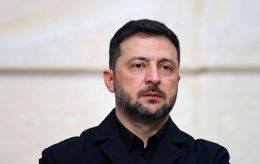Not only MiGs: What aircraft does Ukraine need to defeat Russia in the sky?
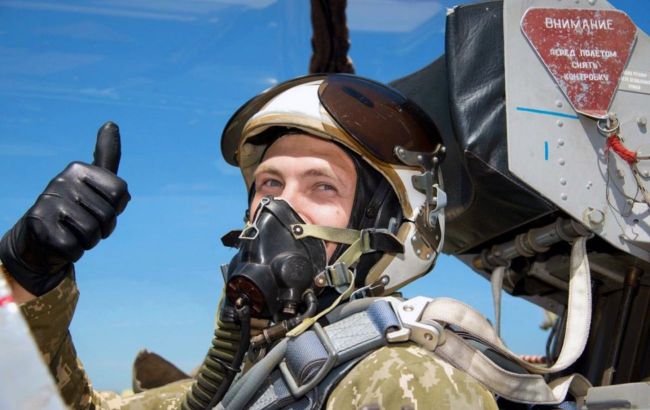 Ukrainian pilot (Photo: Armyinform)
Ukrainian pilot (Photo: Armyinform)
What Ukraine is promised by Western allies, how MiGs will help Ukraine in the fight against aggressors, and what is needed for air parity and an advantage on our side.
In the year since the full-scale invasion, Ukraine has received an unprecedented amount of different Western weaponry. Allies have supplied the Ukrainian Armed Forces with military equipment that qualitatively surpassed that of the enemy, enabling them not only to repel enemy attacks but also to carry out successful counteroffensive operations.
Overcoming the peculiar "embargo" on armored vehicles, Ukraine has once again declared its need for new aviation. The Soviet fighter jets currently used by the Ukrainian military lag behind their Russian counterparts in terms of quality and quantity. In response to numerous requests, several countries have expressed their intention to replenish Ukraine's aircraft fleet, but not with Western models, but with the same Soviet fighter jets.
First steps
In March, Poland announced that it plans to transfer four MiG-29 fighter jets to Ukraine shortly, as President Andrzej Duda reported. On March 14, Polish Prime Minister Mateusz Morawiecki stated that the fighter jets would be delivered to Ukraine within 4-6 weeks. Warsaw assures that they will be modernized.
According to the Military Balance data, when it comes to aircraft that Poland previously received from the Czech Republic and Germany, they were modernized to NATO standards, with their radio navigation equipment, communication systems, and "friend-or-foe" identification systems upgraded. In contrast, Poland plans to acquire American F-35 fighter jets and South Korean FA-50s.
Slovakia announced its readiness to transfer additional MiG-29s to Ukraine. Out of the 12 aircraft currently in service, Bratislava plans to provide 11 to the Ukrainian Armed Forces while keeping one as a museum exhibit.
Thus, Ukraine can count on expanding its aircraft fleet, and Western partners are observing the formation of a so-called "air coalition" of allied countries that have decided to independently assist Kyiv in revitalizing its aviation capabilities.
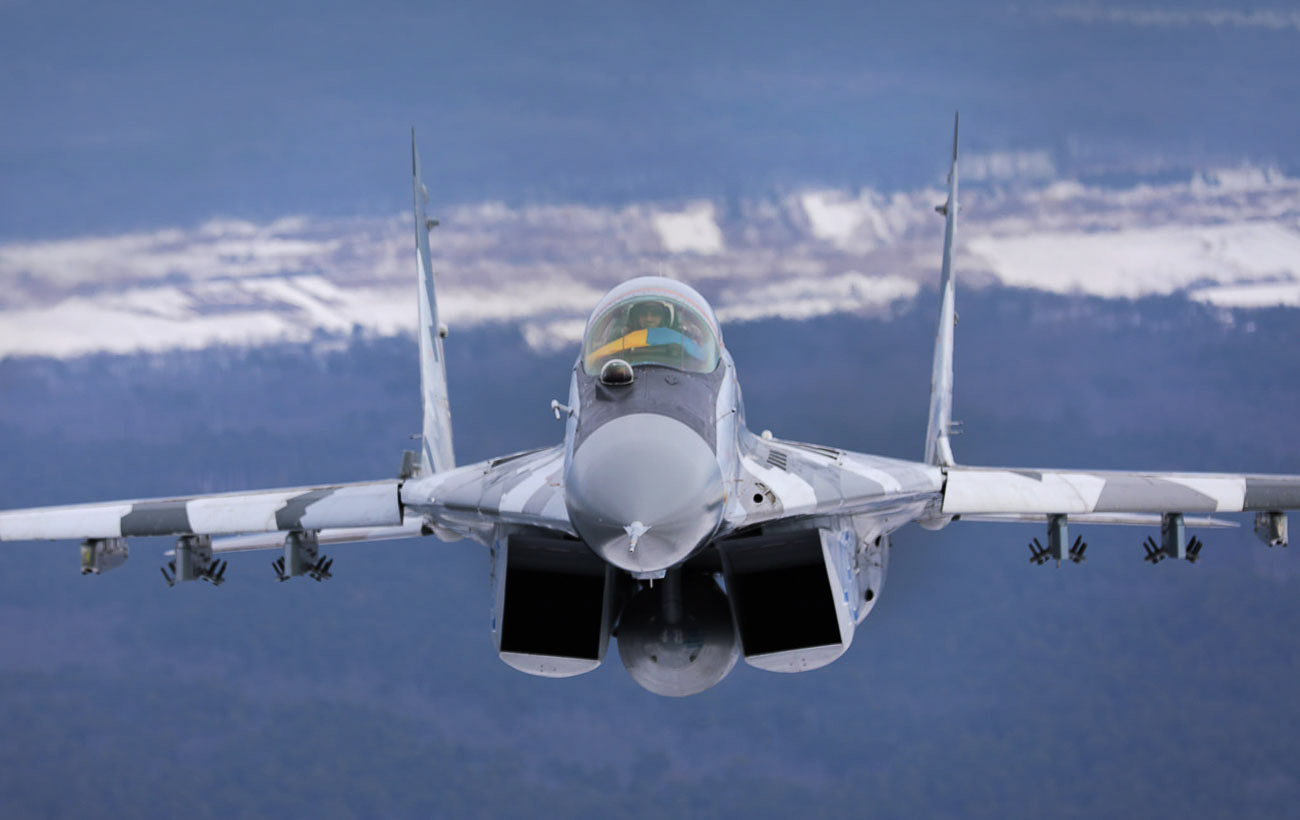 MiG-29 fighter jet (Photo: Air Force Command of Ukrainian Armed Forces Facebook)
MiG-29 fighter jet (Photo: Air Force Command of Ukrainian Armed Forces Facebook)
Today, according to military experts, the Ukrainian Air Force faces three main tasks: air defense, combating Russian aviation, and supporting ground forces.
The current aircraft in service with the Ukrainian Armed Forces cannot effectively perform tasks related to Ukraine's air defense. Thanks to unconventional solutions and the professionalism of Ukrainian pilots, some Russian missiles are intercepted. However, Western counterparts of fighter jets would handle this task much better, says Valerii Romanenko, a leading researcher at the National Aviation University and an aviation expert.
"American fighter jets have the best radars and are better adapted to these tasks. Moreover, when strikes are made not on frontline cities but on other parts of Ukraine, Western fighters could receive reconnaissance information - the flight route of a drone directly from the American AWACS," notes Romanenko.
In terms of combating enemy aviation, the Ukrainian MiG-29 lags behind Russian fighter jets. Throughout Ukraine's years of independence, its contribution to the modernization of its aircraft fleet has been insufficient. While Russia actively worked on developing its aviation potential, Ukraine faced challenges in this area due to various factors.
"They (MiG jets - Ed.) will not be able to effectively combat Russian fighters. The ones we will receive are 4th generation, while the Russians have 4++ generation jets with superior radars, advanced electronic equipment, and missiles that operate on the 'fire and forget' principle," Romanenko noted.
The missiles, including those adapted for Ukrainian MiG jets, require semi-active radar guidance, which means the pilot needs to guide them and illuminate the target with the aircraft's radar from a distance of nearly 20 kilometers, according to experts.
In terms of supporting ground forces, the MiG-29s also lack the capability to employ guided weapons against ground targets. The HARM missiles installed on the fighter jets have significantly improved their ability to strike enemy targets but cannot provide additional information to the pilots, such as precise coordinates for targeting adjustments.
 MiG-29 (Photo: armyinform)
MiG-29 (Photo: armyinform)
The MiG itself is an outdated fighter jet. In fact, the entire aviation fleet of the Ukrainian Air Force can be considered outdated. These aircraft were inherited from the Soviet Union since the MiG, in particular, dates back to the 1970s. The supply of such aircraft will not change the situation significantly in the sky, but it could strengthen Ukrainian aviation, according to Yurii Ihnat, spokesperson for the Ukrainian Air Force.
"Perhaps some of the fighters can be put into operation, while others cannot. However, overall, this can be seen as an enhancement of our aviation's defensive capabilities," Ihnat stated.
Today's aerial battles, according to experts, are not about aerial acrobatics and maneuvers. Much depends on who detects the enemy first and makes the first shot. In this case, a well-equipped MiG can be valuable for air-to-air and air-to-ground combat, says aviation expert Kostiantyn Kryvolap.
"The MiG-29 is a relatively 'fresh' aircraft in terms of its tactical and technical characteristics. It can perform miracles, especially with our pilots. But the most important aspect is its level of modernization," Kryvolap noted.
Polish and Slovak examples of modernized MiG-29s differ, but if Ukraine receives aircraft with modern radars and the necessary suspension for ammunition, Ukrainian pilots will gain a certain advantage.
"For us, a well-equipped MiG-29 with a good radar and proper missile suspension is valuable. It can launch JDAM (Joint Direct Attack Munition) and ordnance that will strike the enemy's rear areas and the frontline. In a way, it can partially perform the role of an assault aircraft," added the expert.
In reality, Ukraine is currently fighting Russia in the air and partially on the ground using MiG and Su fighter jets. By the way, according to March agreements, Bulgaria was supposed to supply Ukrainian forces with Su-25 aircraft. According to Bloomberg, these planes are already in Ukraine in a dismantled state, but Sofia denies this information. In any case, after a year of full-scale fighting against the aggressors, the Ukrainian Air Force has suffered losses to its aircraft fleet. Today's replenishment, according to experts, is by no means redundant.
"What is better for us - to have MiGs that can carry the same missiles as F-16s, with everything ready for MiGs to fly tomorrow, or wait for six months and hope that we will have F-16s?" Kryvolap added.
However, in order to gain an advantage in air battles against the adversary, Ukraine needs more than just new aircraft. It requires comprehensive military modernization and support from its allies to strengthen its defense capabilities on multiple fronts.
On the doorstep of an air coalition
The statements about transferring MiGs to Ukraine are a current form of assistance. And it's more of a psychological factor - giving them fighter jets. It could be a step towards pushing our partners towards F-16," said Yurii Ihnat.
Two years before the start of the major war, in May 2020, the command of the Ukrainian Armed Forces issued the Air Force Vision. It envisioned Ukraine developing its aviation capabilities by replacing outdated fighter jets with 4++ generation models by 2035.
According to the program, we were supposed to procure up to 12 aircraft starting in 2026. By the end of the Vision's implementation, the Ukrainian Armed Forces were expected to have approximately 10 squadrons of new modern fighter jets.
The full-scale war suspended the program. Ukraine gradually overcame various rejections from our allies, first regarding more modern missile systems, then air defense systems. Tanks followed suit after the Patriot systems. Today, Ukrainian diplomats are requesting aircraft. Considering the outdated fleet and the enemy's superior forces, these requests are more than justified.
The Vision mentioned various aircraft models, including the Swedish Jas-39 Gripen, the international Eurofighter, and the French Rafale. The well-known F-16 was also mentioned. However, despite the wide range of available fighter jets, public discussions mainly focus on the American models. It is worth noting that the F-16, like the MiGs, was developed in the 1970s but underwent more extensive modernization stages than its Soviet counterparts.
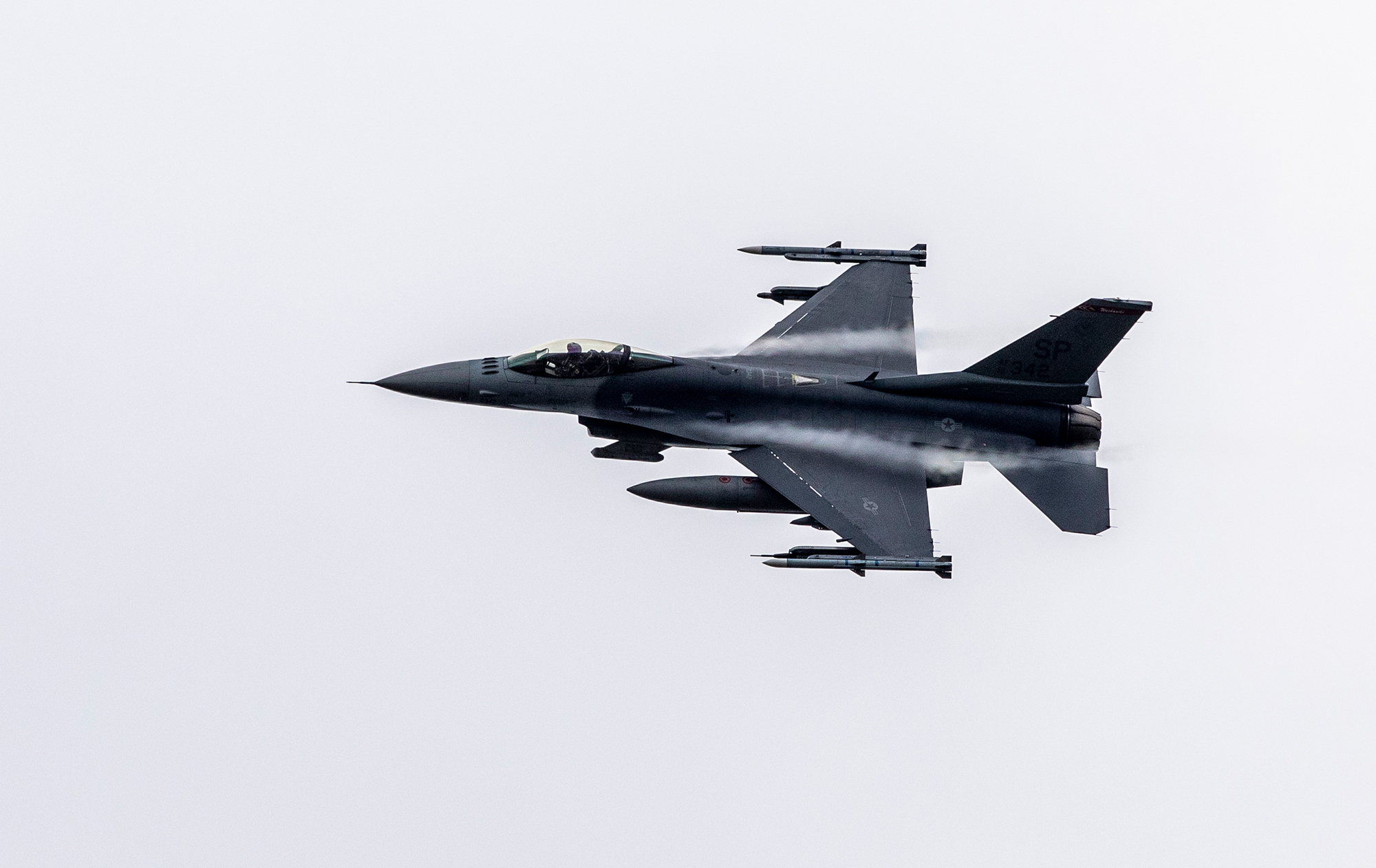 F-16 (Photo: Getty Images)
F-16 (Photo: Getty Images)
According to experts, having the capability to effectively use the F-16 requires more than just pilot training. As claimed by the Ukrainian side, the training can take up to six months - two months on simulators, two in pairings with other pilots, and the remaining two months for flight missions.
Preparing the necessary infrastructure for the F-16 is much more complex. "The training of pilots throughout the history of implementing the Armed Forces system accounts for 25-30% of the whole process. Equipped airfields are required. There is an engineering aviation service. This entire EAS system includes refueling, inspection systems, and all auxiliary equipment. Everything must be ready for operation," says Kryvolap.
Despite the challenges, Western aircraft are still necessary for Ukraine. This is stated by both aviation experts and active military personnel. For example, General Serhiy Holubtsov, the Commander of the Ukrainian Air Force, mentioned that modern fighter jets would provide cover for advancing armored columns and partially fulfill air defense roles.
However, the West is not rushing to supply its fighter jets to the Ukrainian Air Force. In early February, Ukrainian President Volodymyr Zelenskyy mentioned positive progress regarding the transfer of aircraft. British Prime Minister Rishi Sunak, when asked about the possibility of the UK providing Typhoon jets to Ukraine, responded, "Everything can be discussed." US President Joe Biden stated that supplying F-16s to Ukraine is currently not on the table.
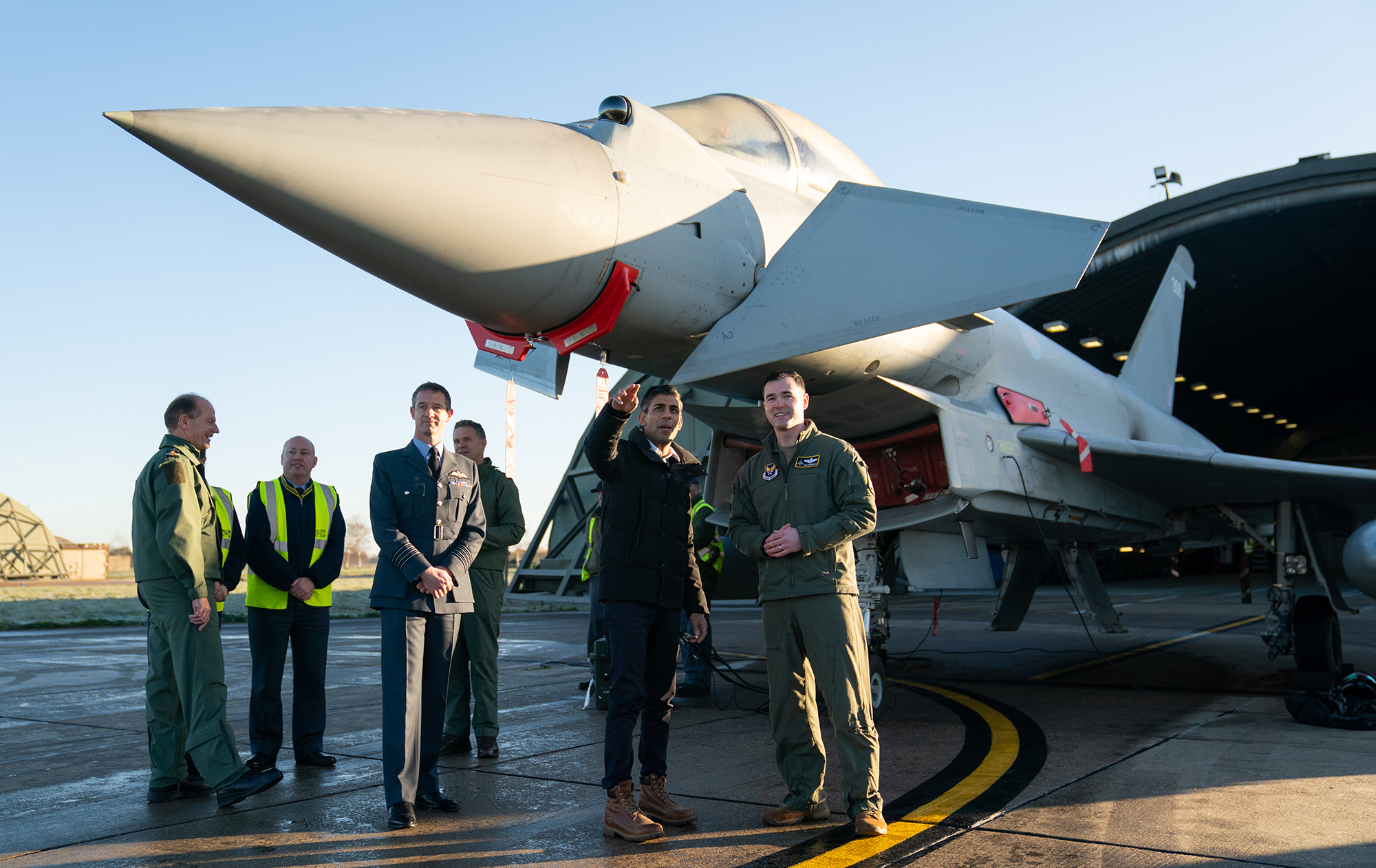 Rishi Sunak near a fighter jet (Photo: Getty Images)
Rishi Sunak near a fighter jet (Photo: Getty Images)
On March 7, during a national telethon, Yurii Ihnat announced that Ukrainian pilots are already in the United States, where their flight training is being evaluated. Concurrently, Western allies continue to supply Ukraine with the necessary equipment. Furthermore, on March 21, it was revealed that ammunition deliveries to the Armed Forces of Ukraine will be expedited, with a total value of two billion euros.
Today, the topic of aviation is of great significance for Ukraine, both within its society and among its Western partners. Ukrainians have witnessed how a previous "no" can eventually turn into a "yes" over time. In light of the potential plans of the Ukrainian army for a spring-summer counteroffensive, Ukraine awaits comprehensive assistance from its partners, both on the ground and in the sky. Judging by how similar situations involving the supply of previously "vetoed" weapons have been resolved recently, there is hope that modern fighter aircraft will soon cease to be an "unresolved matter" for Ukrainian partners.

